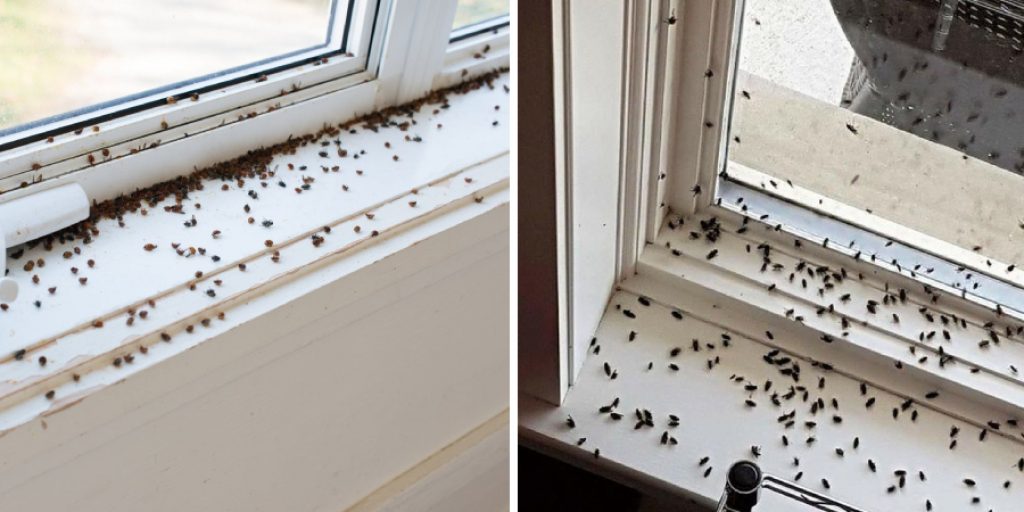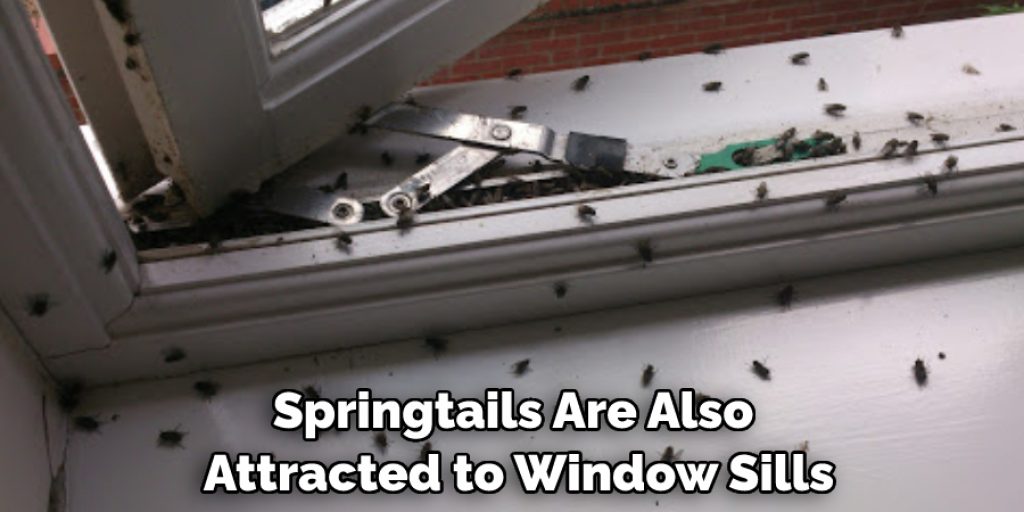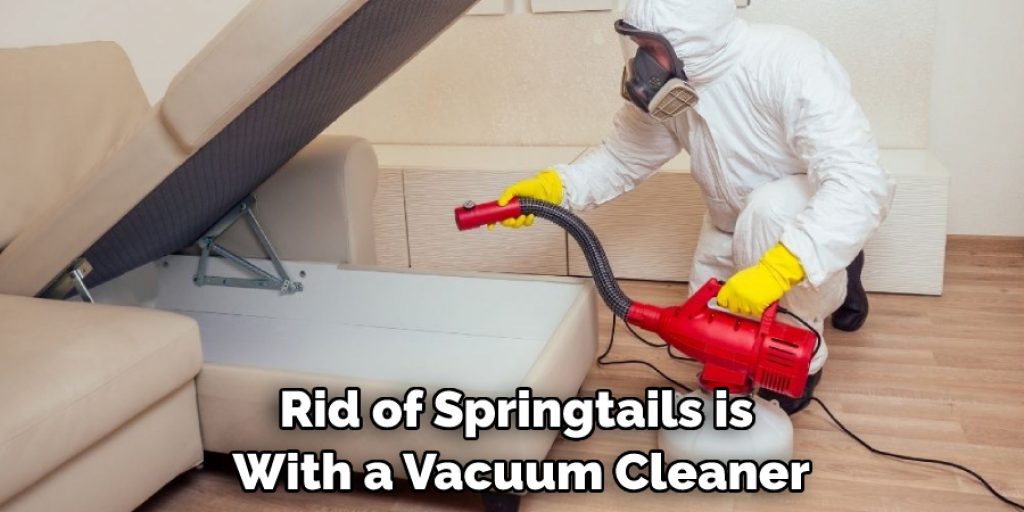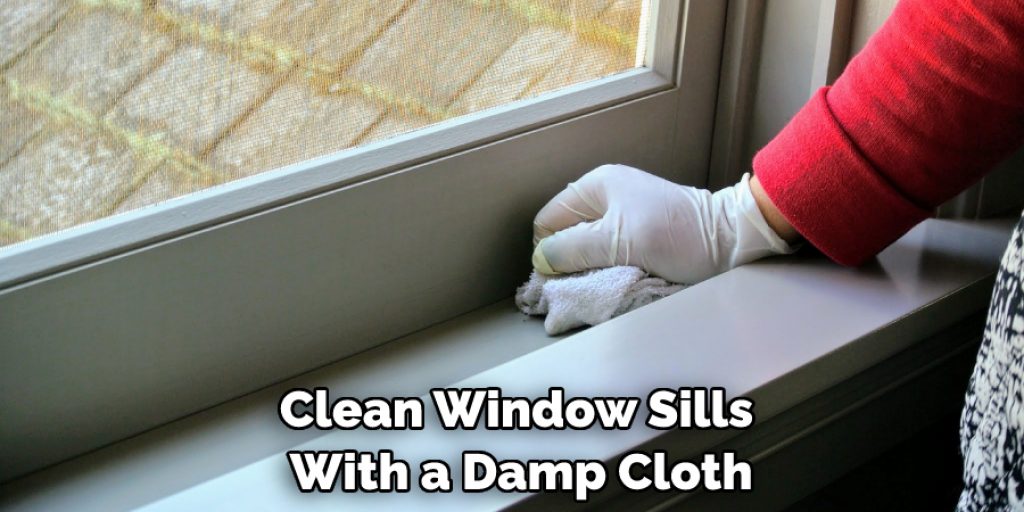How to Get Rid of Springtails on Window Sill
Are you noticing small, white bugs scurrying around your window sill? Chances are, these pests are springtails. It’s springtime, and it seems like those pesky little creatures have once again appeared on your window sill, scurrying around any chance they get. You’ve come to realize that these are not ants but springtails! Ugh! Not sure what the deal is with them or how to get rid of them?

This blog post on how to get rid of springtails on window sill will provide you with all the information you need about how to tackle a springtail infestation in your home. Read on for our comprehensive guide on everything from recognizing a springtail issue to steps and methods you can take to make sure they are gone – once and for all!
What is Springtails on Window Sill?
Springtails are small, wingless insects generally found near sources of moisture. They are attracted to window sills because they need a moist environment as well as access to food sources like mold and fungi, which can be found growing around windows.
Springtails have six legs and range in size from 2-5mm long. They usually appear white or gray in color and have a long tail-like appendage that allows them to “spring” away from danger. Also known as “snowfleas”, springtails are common pests in homes and often appear in bathrooms, kitchens, and basements.
Signs of Springtail Infestation on Window Sill
One of the most common signs of springtails around your window sill is seeing small white insects crawling rapidly across the windowsill. If you look closely, you may also see small colonies of springtails clustered in dark, damp corners near the window. Additionally, you may notice black or gray spots on the surface of your windowsill that indicate where these pests have been feeding. If you see any of these signs, it is likely that you have an infestation on your hands.
What Causes Springtails on Window Sill?
1. Moistness
Springtails usually come into a home by hitchhiking on flowers, plants, or other items that we bring inside. They are attracted to window sills because they thrive in moist conditions, and they can also feed on mold and fungi growing around windows.
2. Poorly sealed windows and sills
Springtails are also attracted to window sills that have not been properly sealed. If the seal around your window is cracked or damaged, it can allow moisture to seep in, which may attract springtails.

3. Overwatering plants near the window
If you have any potted plants near your window, you may want to check that you are not overwatering them, as this can also lead to an increase in springtails.
Required Items
- Vacuum cleaner
- Dish soap
- Rubbing alcohol
- Boric acid
10 Methods on How to Get Rid of Springtails on Window Sill
1. Vacuum
One of the most effective ways to get rid of springtails is with a vacuum cleaner. Vacuuming up any visible springtails on your window sills will help reduce their numbers and prevent them from spreading. Make sure to use a brush attachment so that you can clean all crevices and corners of your windowsill.
2. Dish Soap
A mixture of dish soap and water can be used to get rid of springtails on window sills. Mix a few drops of liquid dish soap with warm water in a spray bottle and then apply the solution directly to your window sill and surrounding areas. This should help kill any springtails that are present.
3. Rubbing Alcohol
Another way to get rid of springtails on window sills is by using rubbing alcohol. Apply the solution directly onto the affected areas and then wipe away any remaining residue with a damp cloth. The alcohol will help kill any springtails that are present and can also help prevent further infestations.
4. Boric Acid
Boric acid is a popular insecticide that can be used to control springtails on window sills. Sprinkle the powder directly onto the affected areas and then wipe away any remaining residue with a damp cloth. Boric acid will help get rid of any springtails present, as well as prevent future infestations.
5. Window Sealant

If you find that your window sills are not properly sealed, it may be time to apply a sealant around the windowsill. This will help prevent moisture from seeping in and attracting springtails. It is also important to make sure that any cracks or crevices in the windowsill are sealed as well.
6. Maintain Cleanliness
It is important to keep your window sills clean and free of debris in order to prevent springtails from taking up residence. Vacuum regularly and make sure to get rid of any food scraps or crumbs that may attract pests. Additionally, be sure to wipe down the surface of your windowsill with a damp cloth every once in a while to help remove any residue that could attract springtails.
7. Reduce Moisture
You can also reduce the amount of moisture around your window sills by using dehumidifiers, vent fans, and air conditioners. This will help keep the area dry and make it less likely for springtails to take up residence.
8. Remove Overwatered Plants
If you have any potted plants near your window, be sure to check that they are not being overwatered, as this can also increase your chances of a springtail infestation. Remove any plants that may be harboring springtails and then replace them with new plants.
9. Repair Damaged Windows
If your windows are damaged or cracked, it is important to get them repaired as soon as possible. This will help prevent moisture from seeping in and attracting any springtails that may be lurking around. Additionally, make sure to seal any gaps or crevices in the windowsill, as this can provide an entry point for springtails.
10. Use Insecticides
Insecticides such as pyrethrins or bifenthrin can be used to get rid of any springtails that may be present. Make sure to read and follow all instructions on the packaging before using any type of insecticide. Additionally, be sure to wear protective gear such as gloves and a mask when handling any insecticides.
By following these steps, you should be able to get rid of springtails on window sills quickly and effectively. Remember to always take the necessary precautions when using any type of insecticide, as they can be hazardous to your health. Additionally, make sure to regularly check for any signs of springtails and take the necessary steps to prevent further infestations.
8 Maintenance Tips

1. Vacuum the window sill regularly to remove dust and debris. Dirt will attract springtails and other pests. It will also limit their food sources.
2. Clean window sills with a damp cloth or sponge to remove dirt and residue. Make sure to rinse off with water afterward. Cleaning regularly will reduce the chances of springtail infestations.
3. Seal off any cracks or crevices around the window sill with caulk to prevent entry points for pests. Sealing off these openings will also reduce humidity levels, which springtails thrive in.
4. Make sure to leave no standing water or moisture around the window sill area. Springtails need a moist environment to survive, so keep the area as dry as possible. Make sure to clean up any water or spills immediately.
5. Install window screens if you don’t already have them. This will help keep springtails and other pests out of your home. Window screen repair kits can be purchased at most hardware stores.
6. Apply a pesticide or insecticide around the windowsill area to kill off any springtails that may have already made their way inside. Read the label carefully before using and follow all safety instructions for proper use and handling.
7. If possible, move any plants away from the window sill area. Plants and soil can attract springtails and other pests, so keep them away from the window sill.
8. Have regular pest control visits to your home to prevent any infestations from occurring in the first place. Regular maintenance will ensure that springtails or other pests are kept away from your windowsill.
This will also help identify any problem areas before an infestation occurs. Pest control professionals can also apply chemical treatments to the window sill area if necessary. Follow their instructions and advice for the best results.

Conclusion
Getting rid of springtails on your window sill can seem like a huge challenge. However, the steps on how to get rid of springtails on window sill outlined above are easy to follow and can help you safely and efficiently manage the problem. Start by identifying your problem, then use insecticidal soap or diatomaceous earth as needed. For persistent cases, resort to professional pest control services.
Remember that while this method may be effective at killing off existing springtail populations, it won’t stop more from taking up residence in your windowsill in the future. To prevent future infestations, make sure to keep that area well-sealed and clean regularly. Lastly, take time to appreciate the beauty of nature and stay vigilant should you ever have another encounter with these tiny insects.




